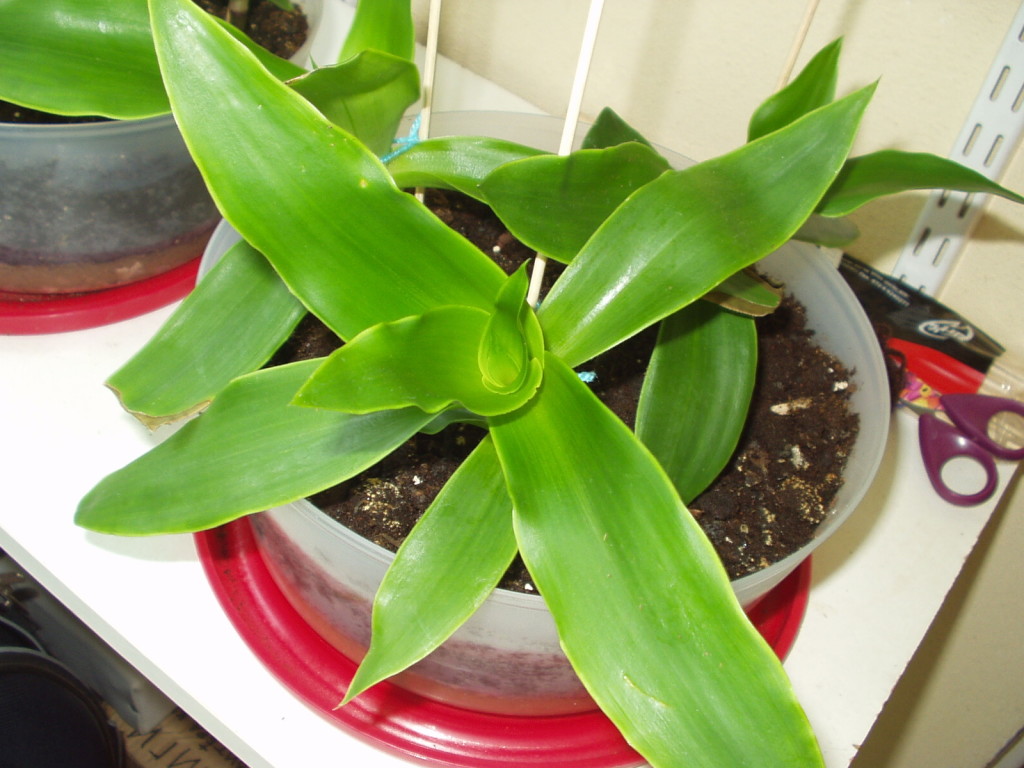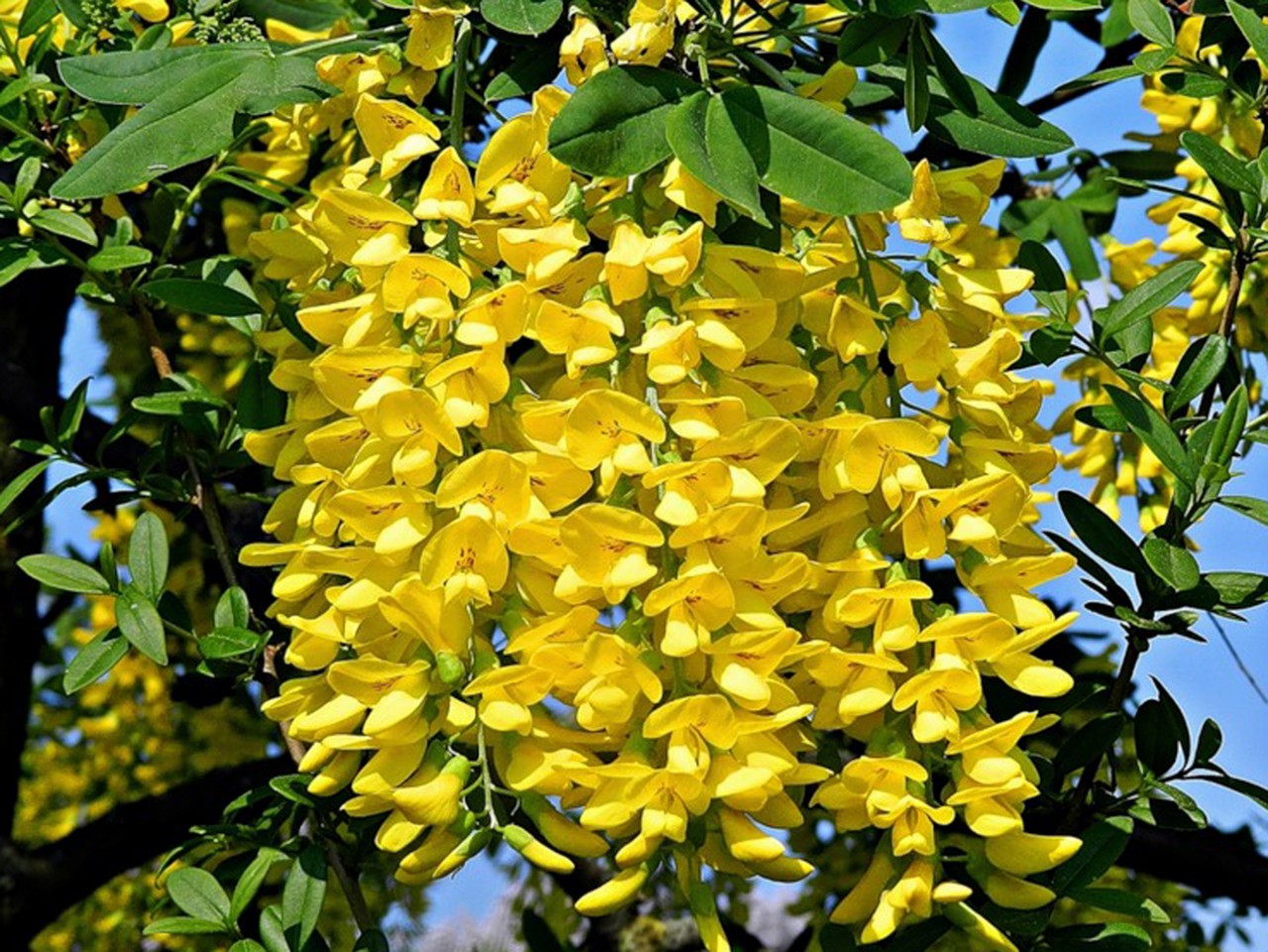Golden mustache is also called fragrant callis, the official name is Fragrant Spironema. It is a plant of the commeline family, which has more than 50 genera and ten times as many species.
The homeland of the golden mustache is South America, and the relative is Tradescantia. They began to accustom the plant to "home life" about 100 years ago, it came to Russia only a couple of decades ago and immediately won the fame of the people's doctor, standing next to aloe, geranium and Kalanchoe.
Content
Features of the golden mustache
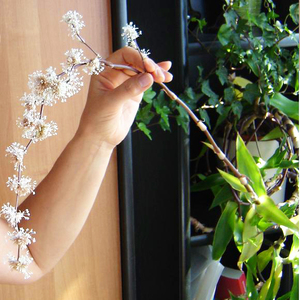 Many growers call the golden mustache dichorizandra, not spironoma. They are two different plants that belong to the same family. They are similar in appearance, which causes confusion.
Many growers call the golden mustache dichorizandra, not spironoma. They are two different plants that belong to the same family. They are similar in appearance, which causes confusion.
Dichorizandra has no "antennae" at all, and its flowers are purple, not white. In addition, it has no healing properties and can only be used as a decoration. Her growing conditions are also different.
Golden mustache can cope with a variety of ailments - it was not for nothing that in ancient times it was called “Living water". Also the names "Mexican mustache" and "Corn ginseng" took root. It is believed that the plant got to Europe through imported foreign goods, the path of which ran through the monasteries and temples of the East.
Local monks first used a modest flower as a decoration for their homes, and soon they discovered it. healing properties, after which its cultivation began. In their hands, the flower began to be called "Oriental mustache" or "Plant of the East".
Surely the monks did not immediately decide to share their discovery with the world, but over time, the mystery ceased to be such. They started talking about the plant, began to value the weight of precious metals and finally renamed it a golden mustache.
The appearance of a golden mustache
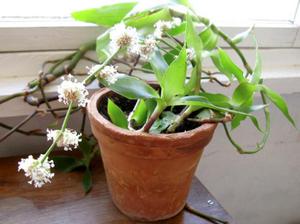 It is a large perennial plant that can grow up to a meter in height. True, it grows rather slowly, at home it grows up to 30 cm in height and up to 100-120 cm in width. If there is support, the stems crawl up, otherwise they spread along the ground.
It is a large perennial plant that can grow up to a meter in height. True, it grows rather slowly, at home it grows up to 30 cm in height and up to 100-120 cm in width. If there is support, the stems crawl up, otherwise they spread along the ground.
As you grow bumps form on the trunkgradually turning into separate shoots - "whiskers". They, in turn, consist of several "joints" and end in leaf rosettes. This is the first type of shoot that is suitable for propagation when the "whiskers" turn purple.
The second type is formed erect, developed leaves, which reach 20-25 cm in length and 5-6 cm in width. They are located alternately, their bases are quite close to each other, which is why many believe that this is one outlet.
In appearance, the foliage is similar to that of corn - the same fleshy and dense... At break, you can see thin stretching hairs, because of which the people nicknamed the golden mustache "Venus hair" or "living hair".
Depending on the care and climate, a golden mustache can bloom. Small white flowers are formed at the tops of the shoots. They have a pleasant aroma that can be compared to lily of the valley or hyacinth.
Hyacinth is a very beautiful plant that can be grown both outdoors and at home:https://flowers.desigusxpro.com/en/sadovye-cvety/giacint/cvety-giacinty-opisanie-vyraschivanie-i-foto.html
The healing properties of the golden mustache
Golden mustache is an excellent and affordable remedy for many ailments, the cultivation of which will not cause trouble. His track record is quite extensive:
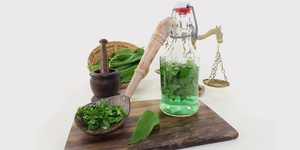 It normalizes digestion and the functioning of the circulatory and respiratory systems.
It normalizes digestion and the functioning of the circulatory and respiratory systems.- It is a pain reliever.
- Helps to improve the functioning of the spleen, stomach and digestive organs.
- It has healing properties and helps to cope with skin diseases, arthritis, bruises, wounds, calluses and frostbite.
- Strengthens the immunity and performance of cells, which are responsible for the protection of pathogenic microflora.
- It can be used for thrombophlebitis, stroke, diabetes mellitus.
Prepare from the plant ointments, infusions, decoctions, oil, compresses and much more. It is worth remembering that the use of a golden mustache can cause an allergic reaction and should be agreed with your doctor. Children are strictly prohibited from taking the plant in any form.
Aloe vera has recently returned to popularity and is increasingly being returned to home windowsills. It not only looks very beautiful, but also has healing properties:https://flowers.desigusxpro.com/en/lekarstvennye-rasteniya/aloe-vera-vyraschivanie-rasteniya-v-domashnih-usloviyah.html
Home plant care
It is not difficult to grow a golden mustache: it is quite unpretentious and requires only not to forget about it. Even beginner growers will easily master its cultivation.
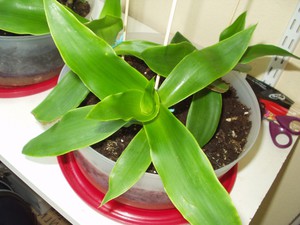 The plant feels great at + 25-27 degrees and low humidity - up to 60%. For the winter, it is necessary to lower the temperature without crossing the threshold of +12 degrees. Frequent airing is recommended; in summer, the pot can be transferred to a balcony or street altogether.
The plant feels great at + 25-27 degrees and low humidity - up to 60%. For the winter, it is necessary to lower the temperature without crossing the threshold of +12 degrees. Frequent airing is recommended; in summer, the pot can be transferred to a balcony or street altogether.- To give the leaves a purple hue, you need to place a golden mustache in direct sunlight. In this case, it will begin to grow in breadth, in the shade it usually grows up. Over time, it will be necessary to tie the stem of the plant to the support so that it develops normally.
- Watering should be moderate but regular in the morning. The plant should not be in swampy soil - it is better to underfill. In winter, watering must be reduced, but if it is hot in the room, then, on the contrary, increase, and also regularly spray the leaves so that they do not dry out.
- Broad leaves can be sprayed with warm, settled water every few days to wash off the dirt and refresh. If the pot is not heavy, it can be taken to the shower and doused with water.
- A young plant is actively developing, and then it also quickly slows down growth. In the first few years, it needs to be transplanted into a larger pot annually, then you can limit yourself to checking the roots and feeding the earth.
- When choosing a pot, it is worth choosing a ceramic version with large holes in the bottom (drainage holes) so that the water can drain. At the bottom, you can additionally put drainage with a fraction of 5-10 mm or pour a mixture of pumped river sand and eggshells.
Golden mustache is unpretentious and can grow in the simplest soil. You can also use loam and add river sand and eggshells, or make a mixture of greenhouse humus and turf with a little sand. Organic varieties containing nitrogen, potassium, and phosphorus can be used as fertilizers.
Reproduction of the golden mustache
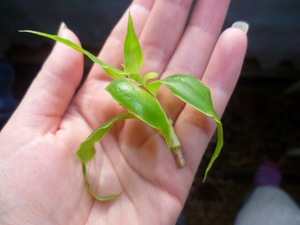 For the first method of reproduction, rosettes are used, which are formed at the ends of thin purple shoots. Them neatly cut and dipped in water by ¾ and left for 1-2 weeks so that the roots can get stronger.
For the first method of reproduction, rosettes are used, which are formed at the ends of thin purple shoots. Them neatly cut and dipped in water by ¾ and left for 1-2 weeks so that the roots can get stronger.
After that, the sprout can be transplant into soilmixed with sand and eggshells. A small pot will be enough at first, but over time, a larger tub will be needed. It is better to propagate a golden mustache in spring or autumn.
The other method requires little or no human intervention. Sometimes the shoots tilt so much that the rosettes can reach the soil and settle down on your own... After they settle down, the sprout can be dug up and transplanted, or left with the "parent".
In a wide pot, several golden mustaches look harmonious: together the bush looks more magnificent and more colorful. If you decide to divide the plant, moisten the transplanted sprout abundantly with water and cover with a plastic cap for 3-4 days to create a greenhouse effect. Then the "young" are transferred to the room and watered abundantly for a couple of days.
You can also use long shootsby transplanting them into soil. However, this method is less successful than the first and second: plants often do not take root.
You can plant a golden mustache not only in a pot at home. It takes root well in summer cottages, in greenhouses and under a film. It is recommended to fertilize open ground with ash and superphosphate.
Succinic acid will help improve the adaptation of indoor plants after transplantation:https://flowers.desigusxpro.com/en/uhod-za-rasteniyami/udobreniya/primenenie-yantarnoy-kisloty-dlya-rasteniy-vidy-v-tabletkah.html
Tips from experienced florists
Despite the fact that in general home care for a golden mustache is not difficult, there are several points that you should pay attention to:
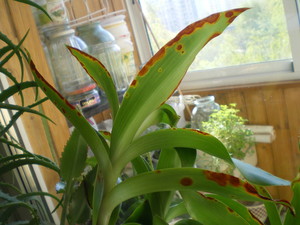 if brown spots appeared on the leaves, and the tips began to dry, you need to pay attention to the lack of water and excess sun, this may be a signal of a lack of minerals in the soil;
if brown spots appeared on the leaves, and the tips began to dry, you need to pay attention to the lack of water and excess sun, this may be a signal of a lack of minerals in the soil;- if the lower leaves began to rot, perhaps the problem is excess water or too low temperature;
- specks of yellow color can signal improper feeding and watering, this will lead to crushing of the shoots, and the plant itself will become dull.
The golden mustache is practically not susceptible to harmful insects, it does not need to be protected. To get rid of thrips and red spider mite, it is necessary to constantly ventilate the room and spray the leaves.
If prevention does not help, it is necessary spray the leaves with an insecticide, cover with a bag and leave for several days.
The second option for solving the same problem will be spraying the leaves with a mixture tobacco and laundry soap... This will help create an additional film on the leaves, through which pests will not pass.
The unpretentious golden mustache is perfect for both experienced gardeners and beginners. Observing the simple rules of watering and carefully choosing the optimal room for the plant, you can forget about the troubles associated with floriculture for a long time.
